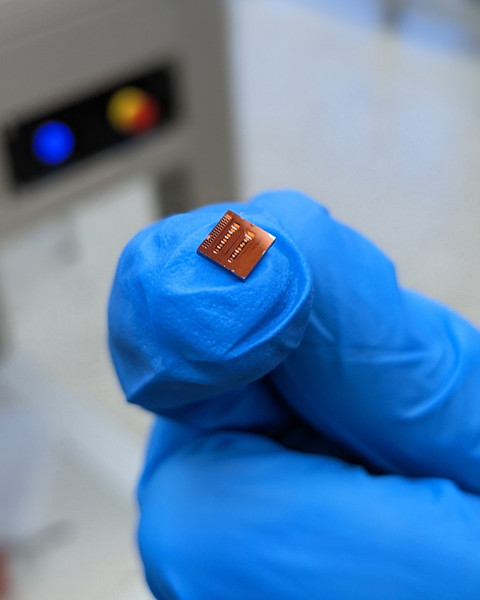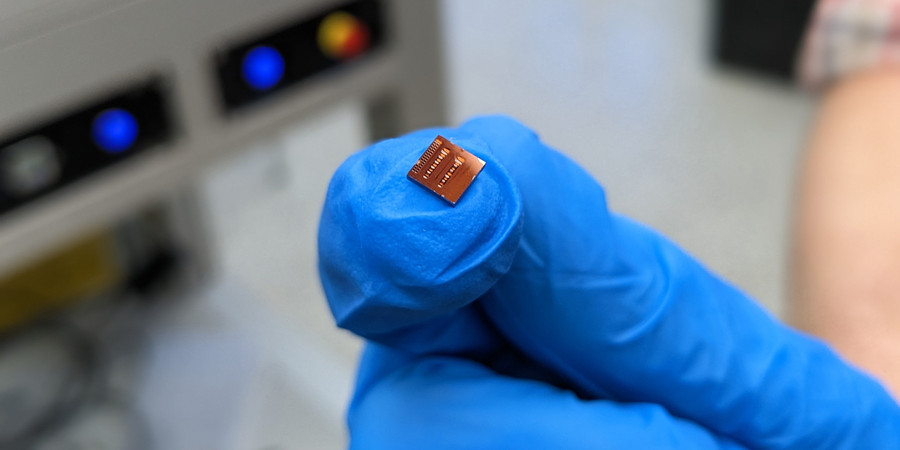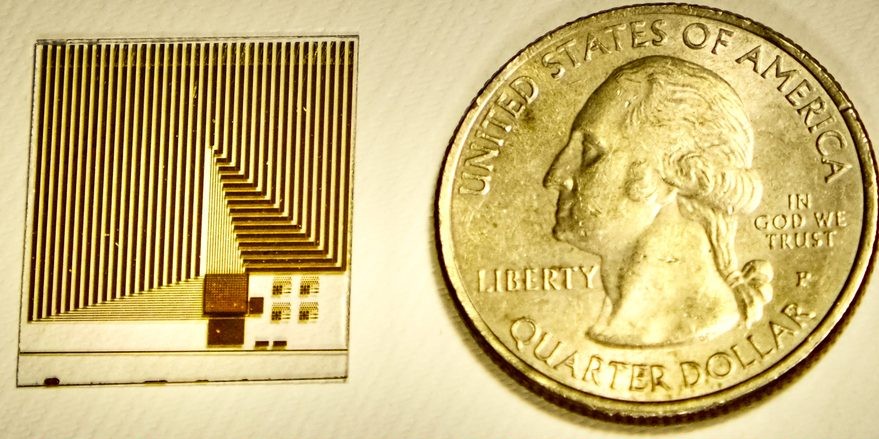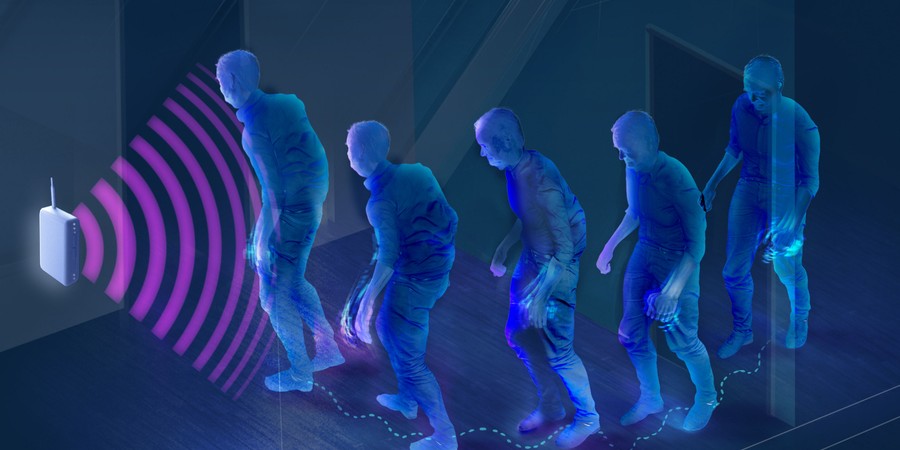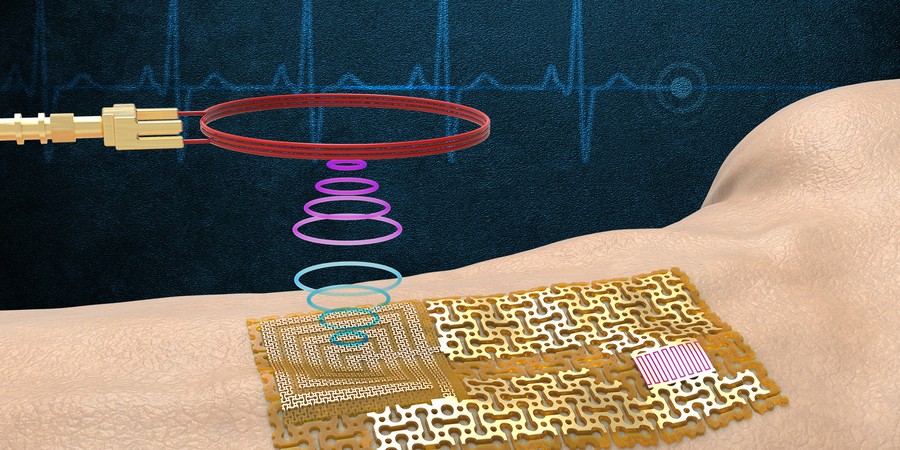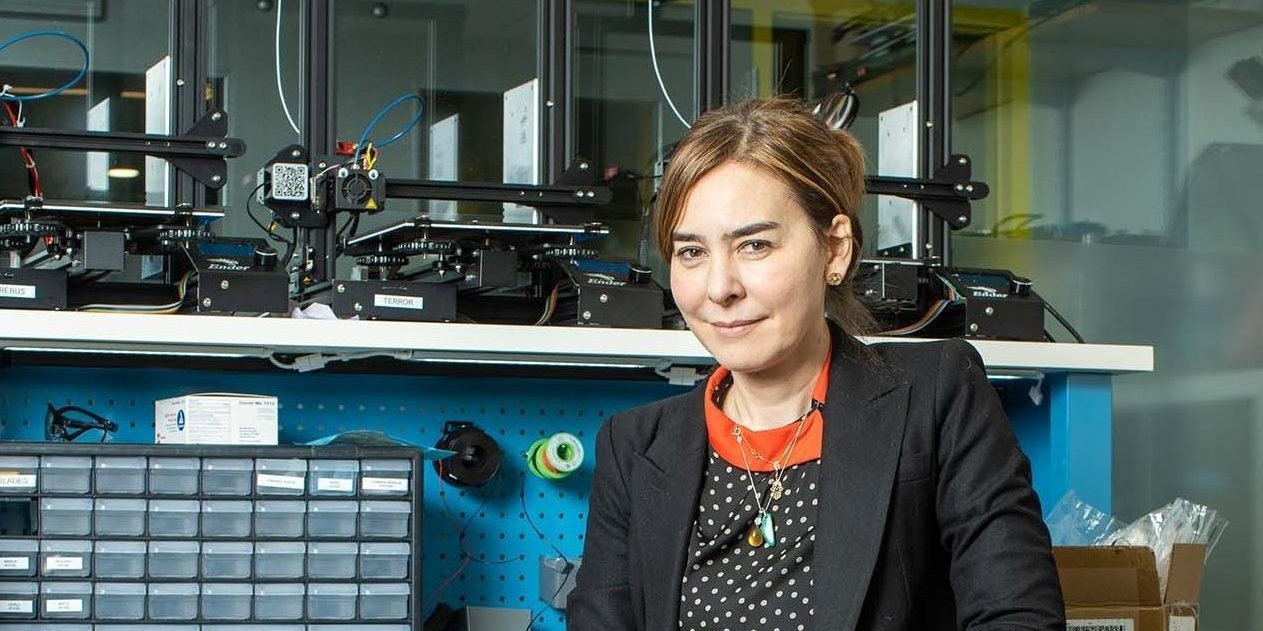Bringing Lab Testing to the Home
Zach Winn | MIT News
The startup SiPhox, founded by two former MIT researchers, has developed an integrated photonic chip for high-quality, home-based blood testing.
This Tiny, Tamper-proof ID Tag Can Authenticate Almost Anything
Adam Zewe | MIT News
MIT engineers developed a tag that can reveal with near-perfect accuracy whether an item is real or fake. The key is in the glue on the back of the tag.
New Sensor Mimics Cell Membrane Functions
Anne Trafton | MIT News Office
The device detects the same molecules that cell receptors do, and may enable routine early screening for cancers and other diseases.
Sensing with Purpose
Adam Zewe | MIT News Office
Fadel Adib uses wireless technologies to sense the world in new ways, taking aim at sweeping problems such as food insecurity, climate change, and access to health care.
Learning on the Edge
Adam Zewe | MIT News Office
A new technique enables AI models to continually learn from new data on intelligent edge devices like smartphones and sensors, reducing energy costs and privacy risks.
Internet of ThingsEdge SecurityIntelligent SensorsHigh Performance Computation
In-home Wireless Device Tracks Disease Progression in Parkinson’s Patients
Adam Zewe | MIT News Office
By continuously monitoring a patient’s gait speed, the system can assess the condition’s severity between visits to the doctor’s office.
Fall MTL Mini Technical Symposium
Wednesday, November 16, 2022 | 9:00am - 12:00pm ET
Multiple Speakers
Artificial Intelligence Model Can Detect Parkinson’s from Breathing Patterns
Alex Ouyang | Jameel Clinic
An MIT-developed device with the appearance of a Wi-Fi router uses a neural network to discern the presence and severity of one of the fastest-growing neurological diseases in the world.
Engineers Fabricate a Chip-free, Wireless Electronic “Skin”
Jennifer Chu | MIT News Office
The device senses and wirelessly transmits signals related to pulse, sweat, and ultraviolet exposure, without bulky chips or batteries.
Dina Katabi Works to Bring Personalized Medicine Home
Ari Daniel | MIT Spectrum
Touchless sensors for medical monitoring. “Once the medical system has more experience with this type of information,” Dina Katabi SM ’99, PhD ’03 says, “it will open up a window into monitoring people’s health in their natural living environment.”

